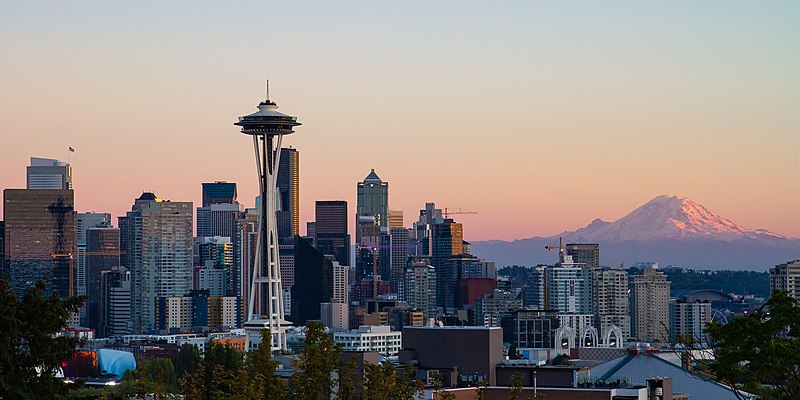
Is population growth in the Puget Sound region as rapid as it seems?
The Bottom Line
- By national standards the Puget Sound region is growing at an above average rate
- By West Coast standards the Puget Sound region is growing rapidly
- Puget Sound is growing more slowly than its historic average rate
The national picture
Over the past 30 years, the Seattle metro region has been among the fastest-growing large metro areas in the country. Figure 1 (below) shows growth rates over this period for the 25 metro areas that were the largest in the country in 1990, along with the average growth rate for the 50 largest metro areas (which, together, contain 55 percent of the national population).
What is noteworthy about this ranking is that of the metro areas that grew faster than Seattle, only Denver is outside the Sunbelt. The big Sunbelt metro areas (Atlanta, Houston, Dallas, Phoenix) have grown rapidly for two reasons, both of which are not associated with Seattle: low costs and warm weather. Low regulatory costs and ample zoned land made it inexpensive to build residential and commercial space in these areas, and the Seattle area is not known for low development costs. Weather is generally thought to be the most important factor in migration, and Seattle’s weather ranks low in appeal. So, Seattle is growing at nearly the Sunbelt pace without the Sunbelt advantages.
The West Coast and California
Figure 1 also shows that Seattle ranks higher than the three coastal California metro areas on the chart—San Diego, San Francisco and Los Angeles. The West Coast has become known for a difficult development environment and for consequent high housing costs. There has always been strong migration up and down the West Coast, and Seattle’s cost advantage relative to the large California metro areas has made it a destination for many of those exiting California. Los Angeles County is the third largest source of migrants to King County, after Snohomish and Pierce counties.
Figure 2 shows the size ranking of U.S. Metro areas by decade. Note that some metro areas fall off the list between 1990 and 2018 and others appear after 1990. Some rise up on the list and others fall. But Seattle remains in exactly the same position: Number 15. Among the 14 metro areas ahead of Seattle, only one dropped off between 1990 and 2018 (St. Louis) and only one joined (Phoenix). So while Seattle is growing nicely, it just can’t get any traction in its national rankings. Seattle’s relative isolation, high costs and niche economic roles make it an unlikely breakout story.


Historic growth rates

Between 1990 and 2019, the three-county Seattle Metro area grew almost exactly 50 percent, from just under 2.6 million people to over 3.4 million.
While this pace of growth has seemed rapid and disruptive, it is below the region’s historic average. Figure 3 shows the growth rates for the metro area between the national census. Leaving out the outlier decade of 1900 to 1910, the average growth of the region has been 22 percent per decade.
The first decade of the Twentieth Century saw an astounding level of growth in the region and across the state. The next two largest decades of growth included the two world wars, during which the region served as a major center for manufacture of armaments—shipbuilding in WWI; shipbuilding and aircraft in WWII. The two smallest decades of growth included the Great Depression and the 1970s, with the aftermath of the Boeing Bust of 1969. The third slowest decade for growth was the 2010s, which included two deep recessions.
Looking ahead
Like other metro areas on the West Coast, Seattle has policies in place to restrict the spread of urban development, which will tend to slow growth and discourage the suburban and exurban business and residential growth common in the Sunbelt. But unlike other West Coast metro areas, Seattle is actively encouraging high density multi-family development. So, questions going forward are:
- Will Seattle continue to find engines of growth that do not require the business advantages of the Sunbelt, and thereby continue to grow in spite of its disadvantages relative to the dynamic Sunbelt metros?
- Will public policy in the Seattle region, which is growth-friendly by West Coast standards, encourage further exodus from California to the Seattle area?
- With Seattle’s cost advantage over Northern California, will its status vis a vis Silicon Valley evolve from a distant outpost into more of a parallel business location?
Top image: Wikimedia
Discover more from Post Alley
Subscribe to get the latest posts sent to your email.
